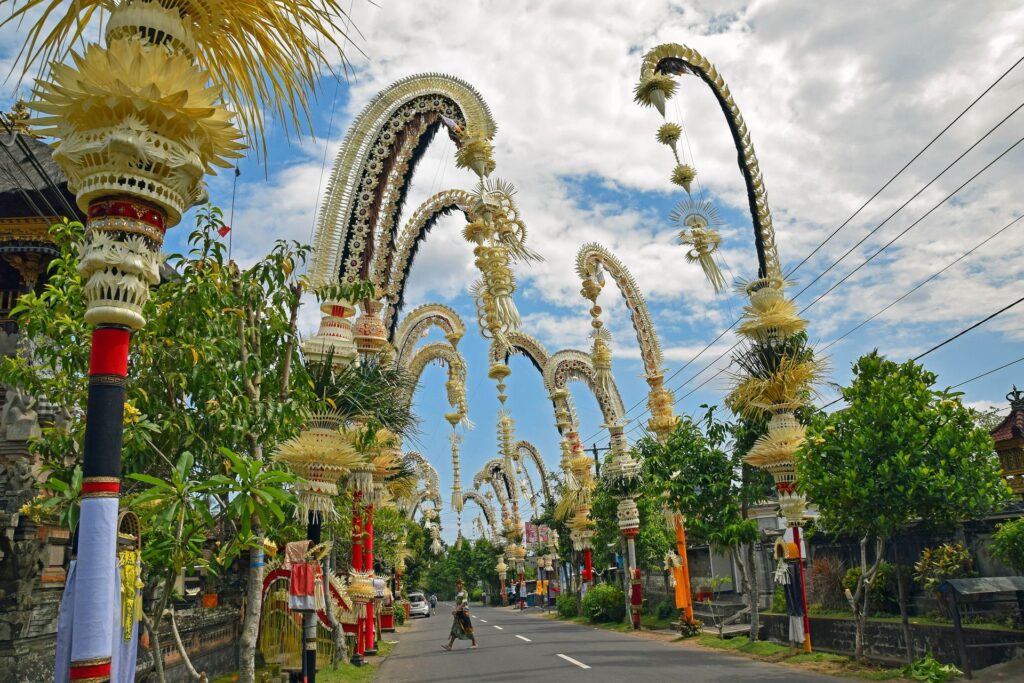1. Galungan and Kuningan Ceremonies

Galungan and Kuningan are two important holidays in the Balinese Hindu calendar. Galungan celebrates the victory of dharma (good) over adharma (evil) and is observed every 210 days. Kuningan, which falls ten days after Galungan, is a day to honor ancestral spirits. During these holidays, the people of Ubud create penjor (bamboo poles decorated with offerings) and adorn temples and homes. The celebrations include religious processions, dances, and offerings.
2. Kecak Dance

The Kecak Dance, often referred to as the “Fire Dance,” is one of the most famous traditional dances of Bali, frequently performed in Ubud. This dance is unique because it is not accompanied by musical instruments but by a male chorus chanting “cak” rhythmically. The performance tells the story of the Ramayana, a Hindu epic recounting the adventures of Rama and Sita.
3. Nyepi
Nyepi, or the Day of Silence, is a Balinese Hindu holiday marking the Saka New Year. On this day, the entire island of Bali, including Ubud, observes a day of complete silence. No activities are conducted outside the home, lights are turned off, and public transportation halts. This day is intended for self-reflection and meditation. Interestingly, the day before Nyepi, there is a parade called Ogoh-ogoh, where giant effigies representing evil spirits are paraded through the streets to be driven away.
4. Subak Tradition

Subak is the traditional Balinese irrigation system that has been recognized as a UNESCO World Heritage site. In Ubud, you can see terraced rice fields managed using the Subak system. This tradition serves not only as an irrigation method but also as a way to maintain harmony between humans and nature, as well as among farmers. Each farmer has a responsibility to maintain the flow of water and follow collectively established rules.
5. Odalan

Odalan is a ceremony celebrating the anniversary of a temple in Bali, typically observed every 210 days. In Ubud, almost every temple has its own Odalan, which can last several days. The event includes offerings, traditional dances, gamelan music, and various other rituals. The people of Ubud are highly enthusiastic about celebrating Odalan as a form of respect to the deities residing in the temples.
6. Ubud Art Market

The Ubud Art Market is not just a place to shop but a venue where Balinese culture and art come alive daily. Here, you can find a variety of handmade crafts, paintings, sculptures, and traditional Balinese textiles. The market is also a place where local artists showcase their work, allowing visitors to learn about Balinese art and culture firsthand.
Conclusion
Ubud is a destination rich in tradition and culture. From religious ceremonies to performing arts, every aspect of life in Ubud reflects the depth and beauty of Balinese culture. Visiting Ubud is not just about enjoying the scenic beauty but also about experiencing and learning from traditions passed down through generations.
Have you ever visited Ubud? Which tradition impressed you the most? Share your experiences in the comments!

